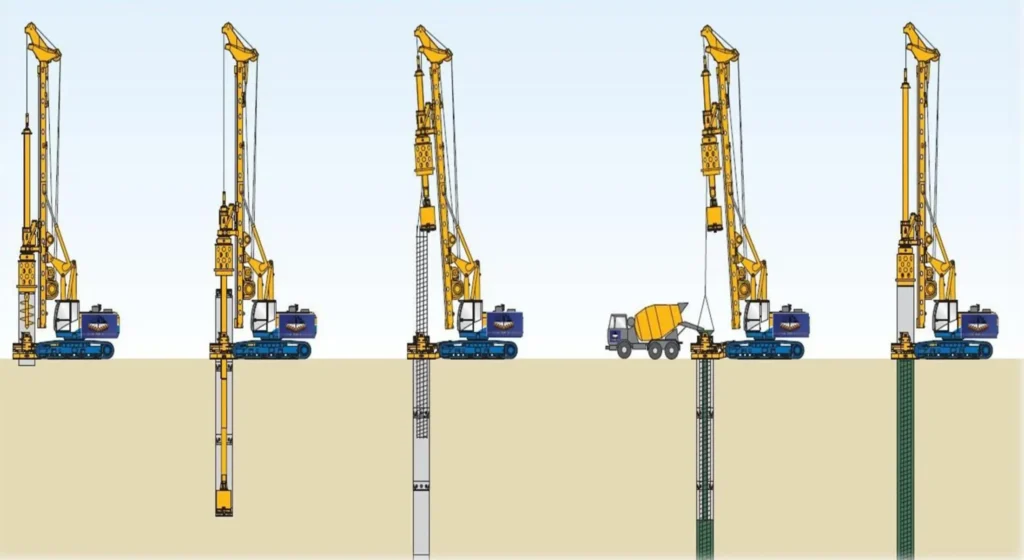
Bored piles are non-displacement piles formed by excavating a hole and casting concrete in place. This method suits stable soils where borehole walls remain intact, though in unstable ground like loose sand, temporary casing or bentonite slurry may be used to support the hole. In some cases, full-length temporary casing is driven.
Soil Strength Piling & Foundations executes bored piles ranging from 50 cm to 250 cm in diameter, reaching depths up to 50 meters. As they generate minimal vibration and lower noise levels, bored piles are ideal for urban or noise-sensitive environments.
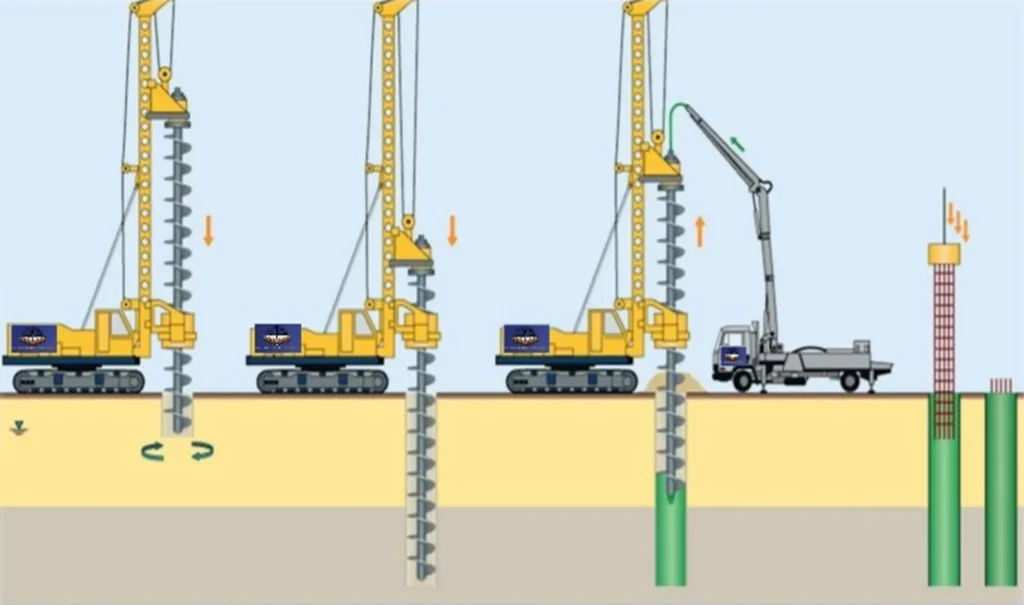
CFA piles are a type of cast-in-situ replacement pile where the soil temporarily supports the drilled hole. A hollow stem auger is drilled into the ground to form the pile diameter, and ready-mix concrete is pumped into the hole as the auger is withdrawn, eliminating the need for temporary casing or slurry. Once the auger is removed, a reinforcement cage is installed.
Soil Strength Piling & Foundations typically executes CFA piles with diameters ranging from 50 cm to 75 cm, extending to depths of up to 16.0 meters. CFA piles offer a fast and cost-effective installation method.
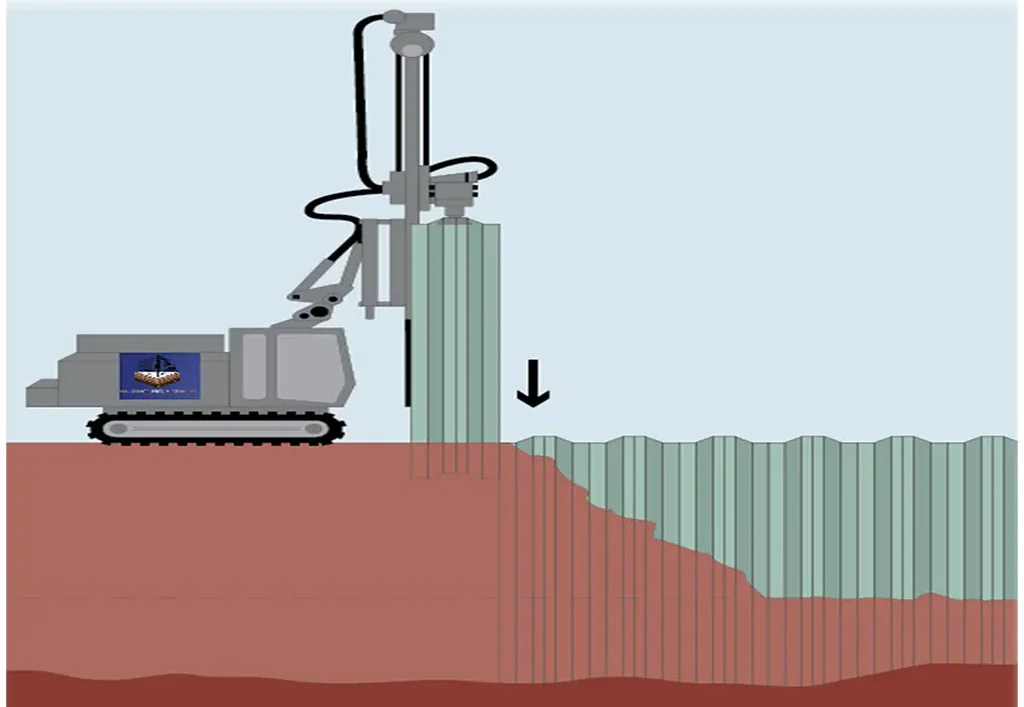
A Sheet pile wall is commonly used as a temporary/ permanent (as per requirement) retaining wall system. The suitability of sheet piles is influenced by the following factors:
• Soil Conditions: The ease of pile installation depends on the type of soil.
• Excavation Depth: The required depth for effective installation.
• Water Tightness: The ability to prevent water ingress.
• Ease of Withdrawal: The ability to remove temporary sheet piles after us
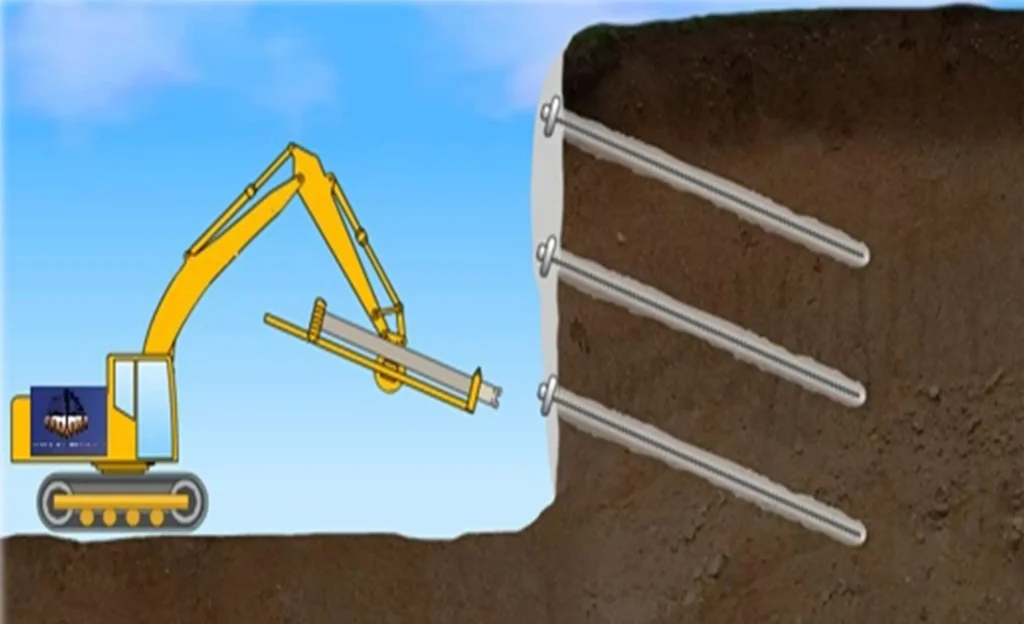
A soil nailing consists of two main components:
• Soil Nailing (vertical component)
• Lagging (horizontal component)
The installation resistance of Soil nailing is similar to that of sheet piles. Soil Nailing are typically used for shallow excavations in soils above the groundwater table, providing temporary support.

A contiguous pile wall can serve as either a temporary or permanent wall for excavation, typically used when low water levels can be achieved.
The advantages of contiguous pile walls include economic/timesaving/fast track progress construction, making them ideal for both temporary and permanent applications in favorable drilling conditions. This system offers a higher capacity to overcome obstructions compared to other methods. However, additional work is required to achieve an acceptable surface finish on the wall.
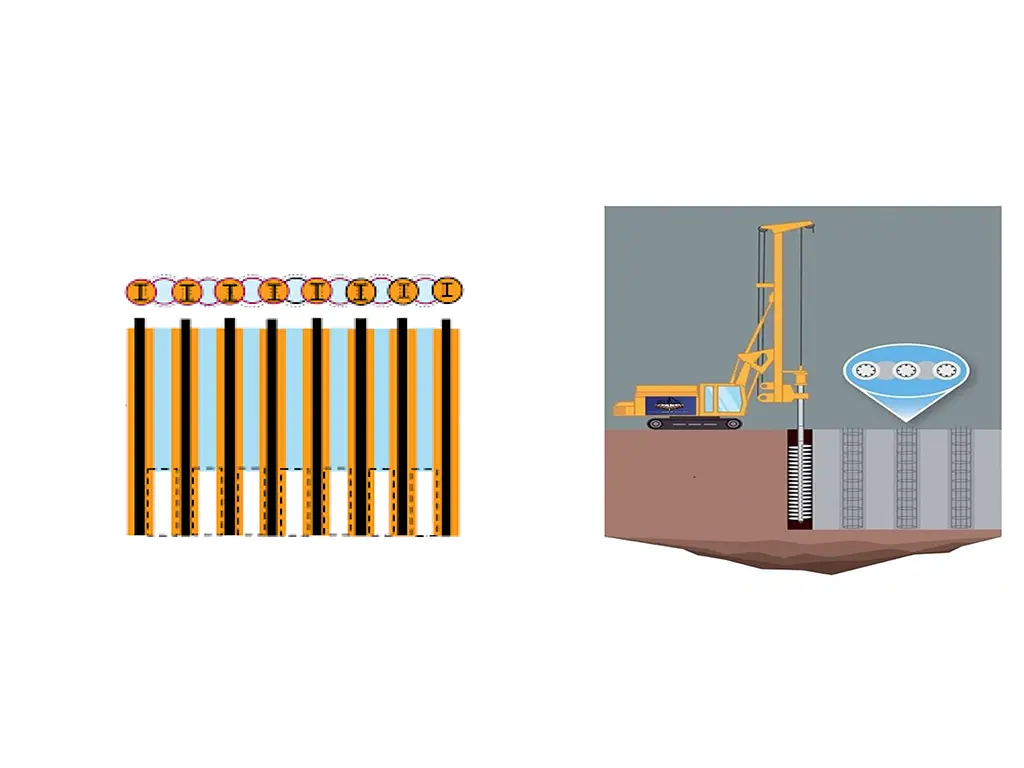
Secant Pile Walls offer an effective watertight retaining solution, especially in areas with a high water table. Formed by interlocking primary and secondary piles, they provide both structural support and water resistance.
Primary Piles are bored and concreted at slightly less than twice their diameter in spacing.
Secondary Piles are installed between primary piles after the concrete sets, typically reinforced for added strength.
Reinforcement is concentrated in secondary piles to enhance stability.
Secant pile walls are ideal for temporary protection in sensitive or collapsible soils and can be extended into rock with ease.

H/I-Beam with Concrete Panel Shoring is a robust and cost-effective solution for excavation support in both shallow and deep applications. Steel H or I-beams are driven into the ground, with precast concrete panels placed between them to form a stable retaining wall.
This system typically supports excavations from 1.2 to 5.0 meters deep (basement depth), with toe lengths extending 10–12 meters below ground. Deeper excavations are possible with proper engineering to handle surcharge loads.
Ideal for both temporary and permanent use, it offers fast installation, high durability, and adaptability to project-specific needs.

Micropiles range in diameter from 15cm to 30cm, 20cm diameter being the most widely used. They are installed by the same small drill rigs used for the anchors and bolts, in a variety of applications. They are used as foundation supports, shoring walls, underpinning systems, and for a variety of other applications. Micropiles are a versatile tool in the hand of the designer who can solve many problems difficult to treat by other means. They combine the high bearing capacity with the operational flexibility and speed. In particularly delicate situations, such as underpinning structures, micropiles can be preloaded using a rigorously controlled system, in order to assure minimum settlement.
© 2025 Soil Strength and Piling Foundations